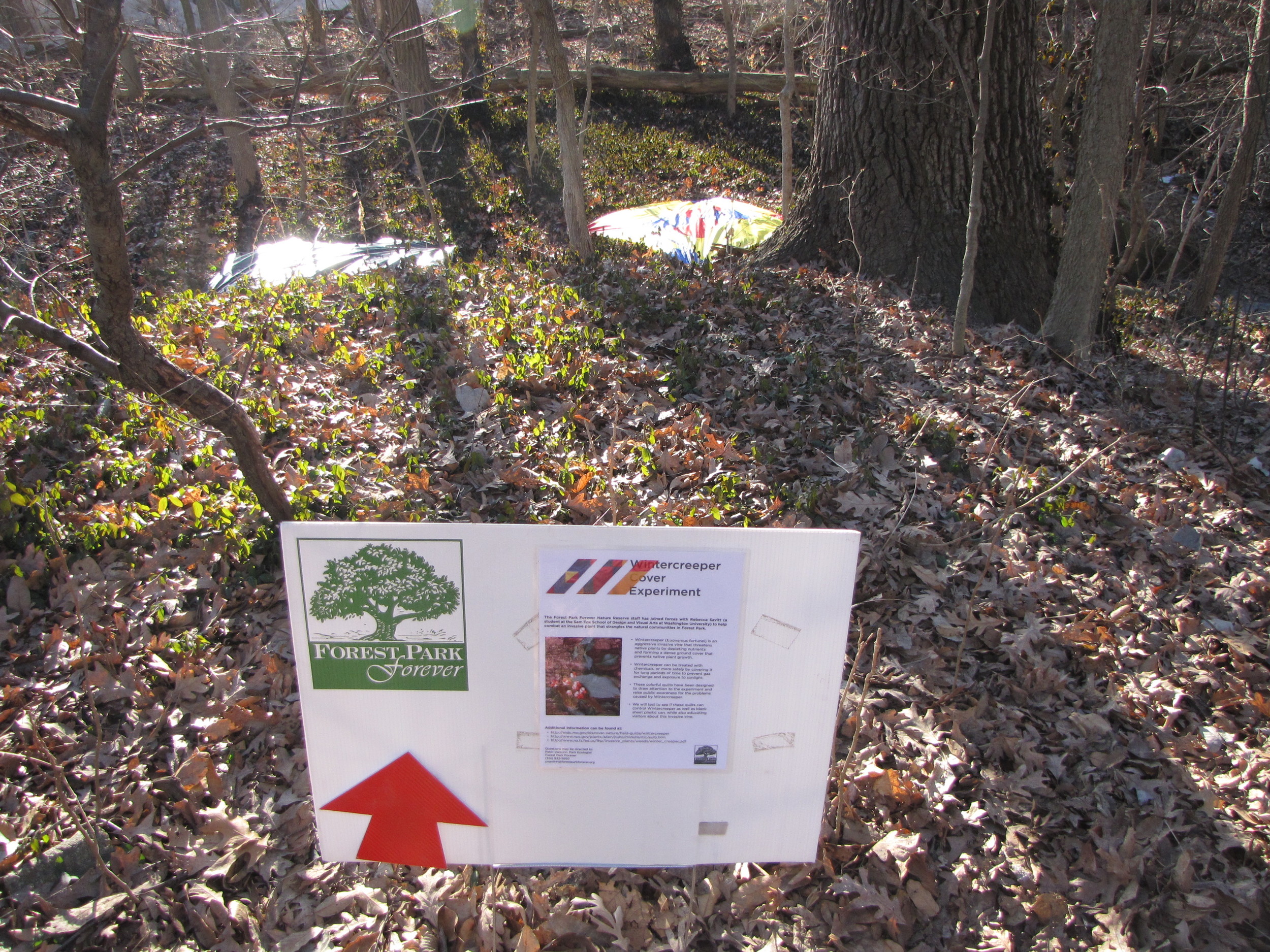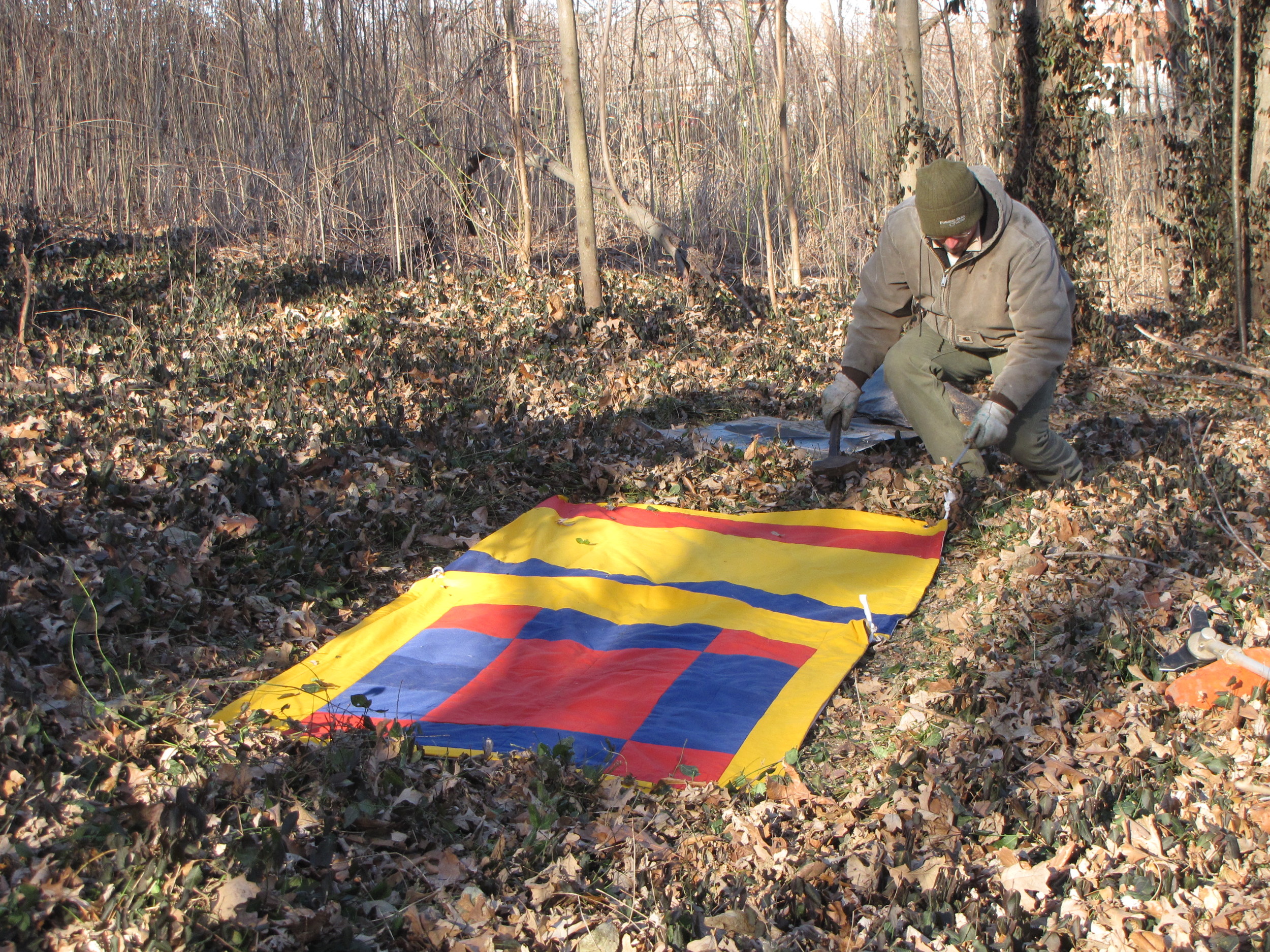Quilts for Wintercreeper: A Colorful Experiment
The Forest Park Forever Nature Reserve staff joins forces with Wash. U student Rebecca Savitt to help combat an invasive plant that strangles the natural communities in Forest Park.
If you've taken a recent walk, run or bike ride near two of Forest Park's wooded areas — one in Kennedy Forest southwest of the Saint Louis Art Museum, the other on the northeast corner of Successional Forest east of The Muny — you might have been struck by an unusual sight: colorful quilts spread out on the ground.
This project is a collaboration between Forest Park Forever's Nature Reserve team and Washington University in St. Louis design and fashion student Rebecca Savitt. FPF Park Ecologist Peter VanLinn had met Rebecca when her design class toured Kennedy Woods and Savanna in 2013. Having learned about the detrimental effects of Wintercreeper (Euonymus fortunei) — an aggressive invasive vine that threatens native plants by depleting nutrients and forming a dense ground cover that prevents native plant growth — Rebecca suggested being part of a solution using her design skills.
While Wintercreeper can be treated with chemicals, a safer route is to cover it for long periods of time to prevent gas exchange and exposure to sunlight. Rebecca designed, made and delivered these colorful 5 ft. x 10 ft. quilts to cover the Wintercreeper. The designs raise public awareness about the problems caused by Wintercreeper, while also providing a way to test her approach against the traditional black plastic used elsewhere. (Rebecca's quilts — canvas and nylon — might be more breathable.)
Our team has established three quilt sites and three treatments to test with each quilt: 1) just the quilt; 2) the quilt with Wintercreeper cut around the quilt; and 3) the quilt with Wintercreeper cut and mowed underneath and around the quilt.
Locations of the Wintercreeper Suppression Quilts (click to see larger)
The quilts will remain in place until at least the beginning of March, but a removal date will depend on weather, temperatures and the general progress of native plants starting to green up and bloom at that time of year. If temperatures stay cool, they could stay up until April. We invite you to pay them a visit next time you're in the Park.



